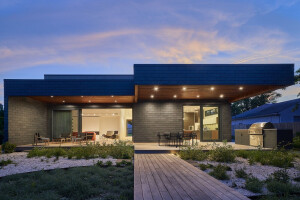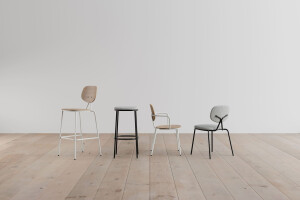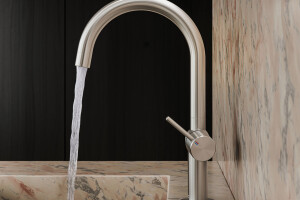The bent gable roof and the elongated roof extensions characterize the traditional appearance of the house from 1951. The frameless glazed floor-to-ceiling window elements on the ground floor on the south and west sides cut into the outer skin form the most important conceptual intervention. The aim of the renovation was to make it possible to experience the beautiful garden with old buildings inside the house. The new uses in the basement are also being responded to with two window enlargements. These are offset from the new openings on the ground floor, resulting in an exciting façade design with new and old openings. While the glazing on the ground floor seems to completely eliminate the separation of house and garden, the openings on the basement floor surprise with views at ground level and interesting insights into the flora and fauna.

The second decisive spatial intervention concerns the entrance area. With the removal of some walls and the insertion of a room divider, the view of the garden is already revealed as soon as you enter the house. The room divider, differentiated in colour from the walls and ceilings, separates the pleasantly proportioned entrance from the kitchen and houses the shower and built-in wardrobes. Old doors with profiled wooden surrounds, tiled stove, floors made of wooden straps and clay plates as well as built-in cupboards with drawings by the painter and author Maria Generosa Christen could be preserved or renovated.




































